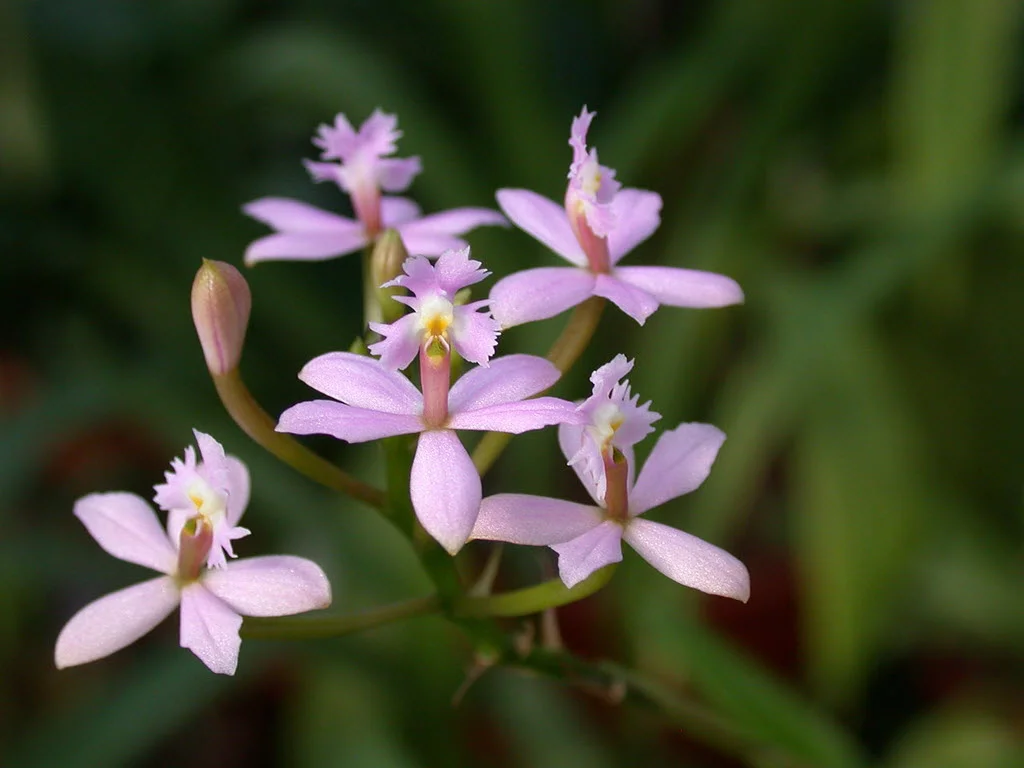Table of Contents
Pronunciation: den-droe-FYE-lax len-den-II
Other Names: The Ghost Orchid, Palm Polly, White Frog Orchid
Introduction
Dendrophylax lindenii is a beautiful and very difficult orchid. It is also very endangered, and should you find it growing wild in Florida, it is illegal to remove it. It also doesn't bloom every year, and this contributes to how rare it is.
Ghost Orchid
If you'll notice from the photo, this orchid lacks leaves, so it photosynthesises through its root system. This also lends to the illusion that the showy white flowers are floating in midair, and this is how the Ghost Orchid got its name. It is extremely difficult to grow, and it does best in greenhouse conditions.
Aside from Florida, the dendrophylax lindenii is also native to Cuba.
Temperature
This plant demands very warm and humid temperatures to grow. During the daytime hours, your temperatures should stay between 75°F and 80°F (23°C and 28°C). The nighttime hours can have slightly lower temperatures, but it won't tolerate drastic temperature changes. During the night, temperatures should stay between 60°F and 65°F (16°C and 18°C).
Another requirement for successful cultivation of this orchid is air movement. This orchid requires stagnant air, and it doesn't do well if it's in an area with a lot of air flow. Terrariums can help with this requirement.
Light
The amount of sunlight your dendrophylax lindenii needs varies depending on the individual plant. Ideally, you want to aim for medium to high light conditions. This should suffice, but some do tolerate bright, direct sunlight.
You can try setting your plants in an east-facing window and see how they do. If they seem to be having problems with the direct light, you can try adding netting to break up the sunlight.
Water and Humidity
This plant likes a lot of water, but chlorinated tap water will kill it. You want to concentrate on keeping it very moist but never allow it to stand in water. Its roots are delicate, and it dies quickly if there is too much or too little water. If it turns yellow or grey, it's getting too much water.
You should water it liberally in the early morning hours and ensure that the water drains off. Continued misting is a good idea, so you're sure that it stay moist.
If you're not sure about the wetness level, wait until your orchid is approaching dryness, and then water it. Your humidity levels should stay around 70% and no lower.
Feeding
Dendrophylax lindenii requires weekly feedings to stay healthy. However, you have to carefully mix the fertilizer with diluted salt water to ensure that it gets the food it needs, but it's not strong enough to hurt the plant's roots.
They do well with one-fourth strength fertilizer that you dilute with salt water once a week. You don't want to switch up this plant's fertilizer when you pick one. You can use normal orchid fertilizer for the best results.
Potting
You should grow these orchids in greenhouses so you can carefully control the temperature, humidity levels, and airflow. These orchids like to be mounted on slabs of bark that are laid over beds of sphagnum moss, but if you can't do that, you can try hanging wire baskets lined with moss.
You can try growing them in terrariums as well, but the roots shouldn't be buried, and they like to be exposed to the humid, moist air. You can repot your orchid every two to three years, but you have to do this carefully, so you don't damage the plant.
Videos
Here is a short video that shows the elusive dendrophylax lindenii in its native Florida habitat.
As a bonus, you can also watch photographers Jeff Ripple and Clyde Butcher walk through the bogs of the Everglades in search of a ghost orchid specimen:
Don’t be sad if you can’t get your hands on rare orchids. We should help protect rare species. Instead, find an orchid that would suit your temperatures and climate well. Check out our comprehensive list of the different types of orchids so you can shortlist your favorites.











